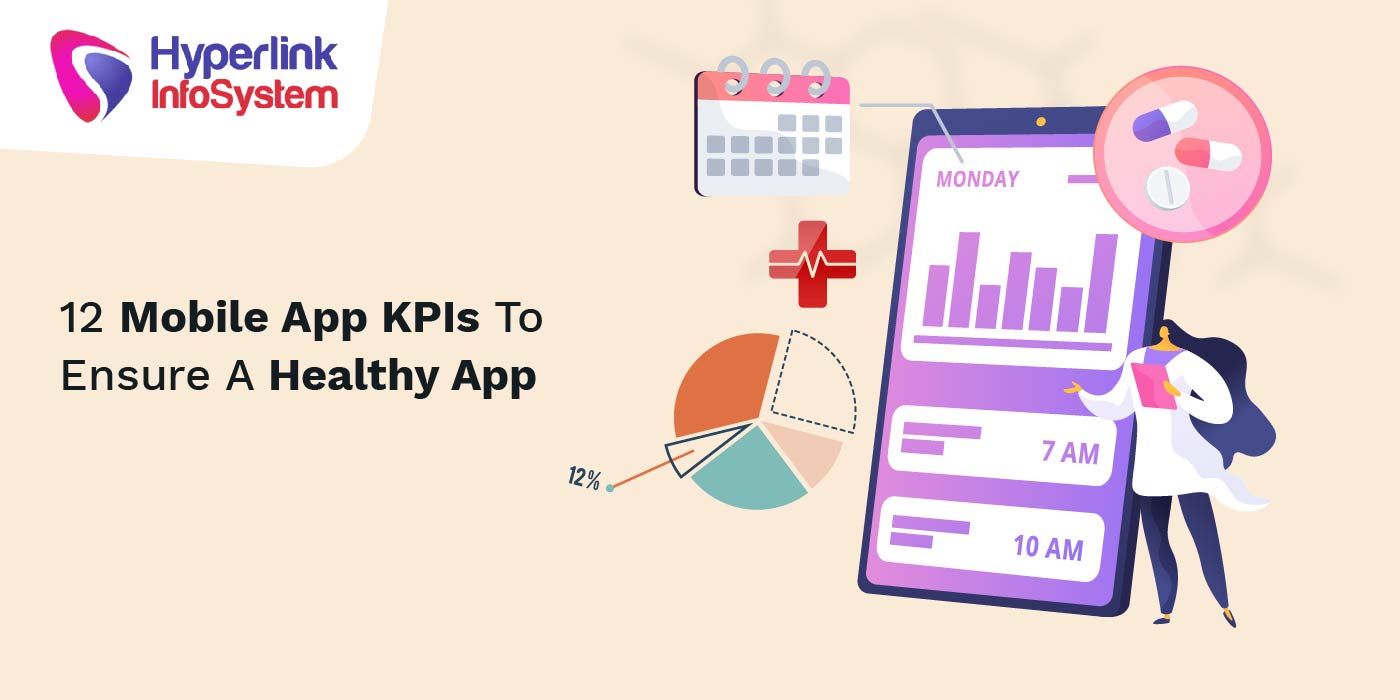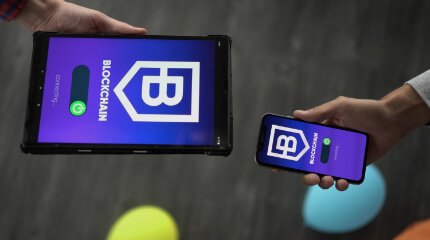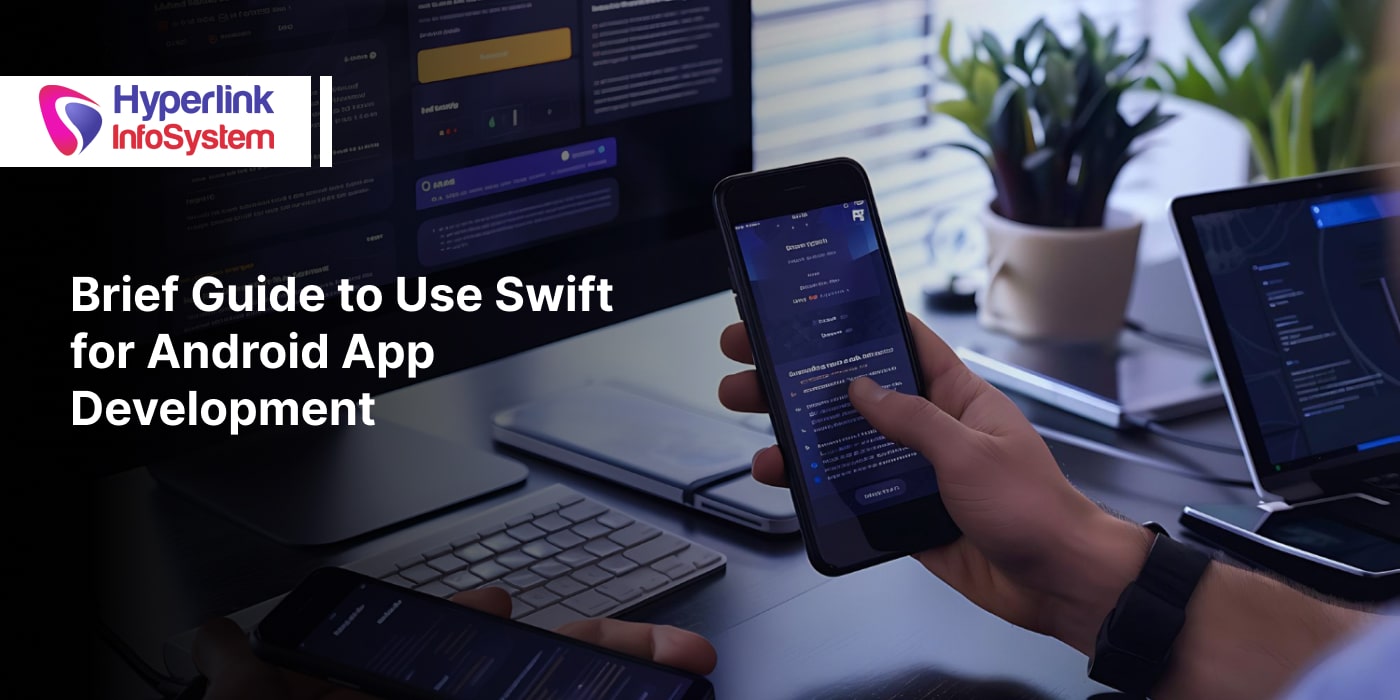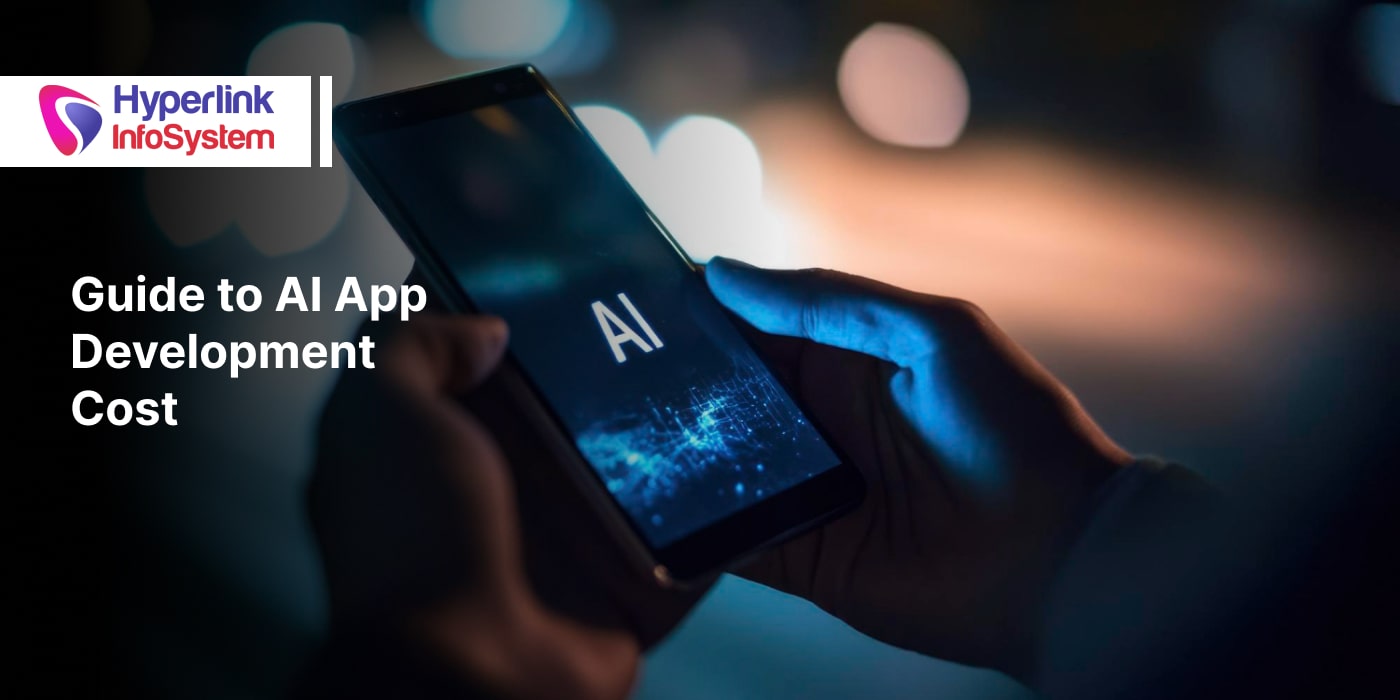�
Mobile apps have not just added to users' convenience but have offered a lot to businesses too. Mobile apps are a source of income and a communication tool to raise their brand's awareness and interact with its clients. But many companies fail to identify that a mobile app is not a 'set it & forget' type business venture, and thus, many businesses have apps that fail to match the current expectations & user needs. These apps fail to meet intended business results. Eventually, this can be attributed to a lack of supervision and examining the right mobile KPIs required for a business to evolve their app successfully.
Mobile app development in 2021 is a repetitive process that needs an app to evolve to attain continuous success constantly. At Hyperlink Infosystem, we provide a broad range of services geared to help businesses analyze their app's existing health and work unitedly to ascertain how we can evolve an app from its existing state to work for users based on particular mobile KPI.
This blog will cover 12 mobile KPIs every business should be tracking to ensure their app's health. These metrics will enable the product team to understand improved app health better and increase retention via various app's life cycle stages. Mobile KPIs have been segmented into 4 categories: Performance, Users, Engagement, and Business.
Performance Metrics
This one simply focuses on how an app runs. Performance metrics provide insights into significant issues related to the app's performance and operations. For instance, if an app crashes, each time it is opened on a device.
API Latency Time
An API is a technical development environment that permits access to a 3rd party app. A fine example of this is Facebook's API that enables Facebook users to sign-in for an app like Spotify using FB's account credentials. It even allows users to share content with their FB news feed from other apps. Latency refers to the total time it consumes for this action to happen. Having this function has become normal and expected by users. Knowing your API latency time will enable you to enhance your app's function.
Crash Rate
The crash rate is quite self-explanatory. This metric will break down the no. of times app crashes, making it simpler to pinpoint the app's problem. Product teams must be careful in supervising this technical failure to avoid disturbing the user experience or causing data loss.
App Loading Time
This metric is focused on how long different features of an app takes to load. For instance, how long it takes for search results to show or how long it takes for the game's next level to load. This metric is key for super-engaged users because slow loading speeds can cause user frustration, ultimately leading to abandonment.
User-Focused Metrics
User-focused metrics provide insights into a product's user base, how huge it is, where they came from, & how frequently they use the product. This insight throws light on user behavior, which is invaluable for product teams as it helps produce ideas on how to create a more personalized user experience.
Acquisition
Acquisition refers to the no. of users who installed an app from a specific location and found the app either through word-of-mouth, paid promotions, or organic search. This metric is critical to monitor as it gives insight into what marketing efforts are bringing in more no. of users and can guide where marketing teams should focus their future endeavors.
Churn Rate
Research shows that approximately 79% of users leave a product after a day, and after 3 months, that no. can rise to 98%. This refers to app churn. Churn rate refers to the % of users who cease using an app within a specific period. Understanding the churn rate will help businesses recognize if they are having problems with retaining users and pinpoint why this might be, eventually providing a chance to recommend and frame retention strategies to solve the issue.
DAU
This refers to Daily Active Users. This metric reflects the no. of users who actively indulge with an app every day. DAU provides an insight into what % of user base users an app and gives info for how engaged they are.
Engagement Metrics
This one takes a thorough look into how users interact with an app, specifically their usage patterns & in-app behavior.
Session Length
This one refers to how much time a user invests in an app during a single session. Session length is marked when an app is released to the time it is times-out or closed. Monitoring this metric is essential to find potential streams of income through app flows.
Session Interval
This one refers to the time that lapses between every time a user uses an app. Eventually, this metric displays how often users engage with a product. It is simpler for businesses to enhance the user experience and motivate frequent opens once this metric is understood.
Time-In-app
Time-in-app monitors how long a user is using an app over sometimes. It's another way to monitor how engaged users are. This metric is used to ascertain usage trends, for instance, if some user segment is consistently opening your app for long periods.
Retention Rate
This is a % of users who return to an app based on their initial visit date. This metric recognizes the most engrossed users, creating better targeting capabilities.
Business Metrics
Eventually, app success is significantly dependent on its ability to produce income or at least noticeable ROI.
Lifetime Value (LTV)
LTV is the main concern for tracking revenue. This indicates the app's financial value and how much each user is worth in his/her lifetime.
Cost Per Acquisition (CPA)
While getting installs and seeing your app gain momentum amongst users can be thrilling. It is essential to monitor how much user acquisition is costing. Acquisition reports monitor how much funds are spent to obtain new users and what they do into your app.
Final Words
Monitoring mobile app KPIs will serve businesses as a regular checkup on their app's health. Enterprises can use these insights to pinpoint problem areas for improvement that can drive UX changes, redesigns, and messaging campaigns for another version of an app. Businesses need to keep in mind that irrespective of the business model, a successful app that brings value and drives sales is dependent on creating constant engagement and personalized experiences.

























